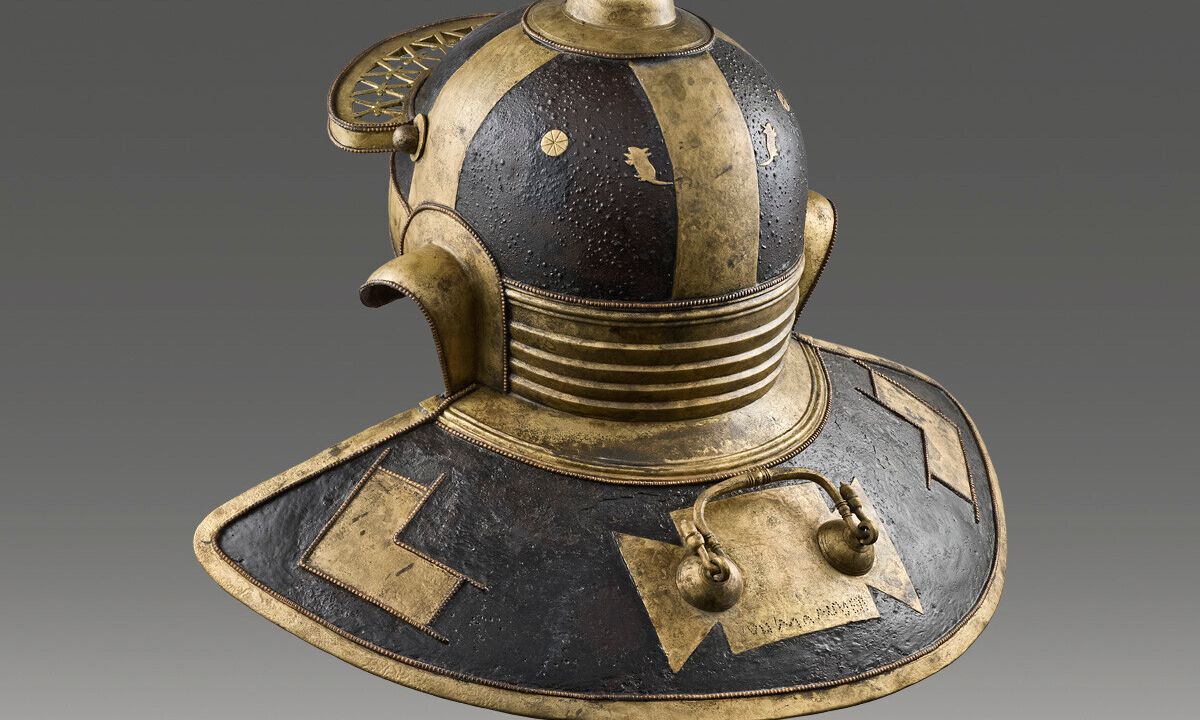The Guttmann Mouse helmet, which could sell for as much as $1.5m at auction next year in New York. © Mougins Museum of Classical Art
A collection of objects from the recently-closed Mougins Museum of Classical Art in the south of France—including what has been described as the world’s largest privately-owned collection of ancient arms and armour—is estimated to bring £22m at Christie’s over the course of a year as the private institution shifts focus to become the first museum in Europe dedicated to women artists.
In August, founder and owner Christian Levett, a former commodities trader, announced plans to briefly close the museum after 12 years in order to rebrand it as the Femmes Artistes du Musée de Mougins (FAMM) and to switch out the existing collection of largely classical art to work by women artists, which Levett has focused on acquiring over the past few years.
Christie’s will auction much of Levett’s collection once held in the Mougins museum across six sales in London and New York, including a two-part, trans-Atlantic auction dedicated to ancient arms and armour. Levett says he decided to sell much of the works previously on display at the museum partly out of a desire to see them continue to be available for the public.
This marble group statue of Bacchus, Pan and Eros from around the third century AD could sell for as much as £500,000 in December. Courtesy Christie's
“The classical art collection would have ended up in storage, which is a bit of a shame for many pieces that have now been on display publicly for 12 years,” Levett says. “It's not a collection that you can just simply put back in storage and forget about, it really needs to be seen. Hopefully a number of the buyers will be institutions and museums.”
The auctions will begin with a sale of roughly 65 lots at Christie’s London in December. As the Mougins museum frequently paired ancient artefacts with more contemporary work that featured similar inspirations or design elements, the sale spans thousands of years. The auction will include a Roman marble male torso from about the first century BC that’s expected to fetch between £250,000 and £350,000, along with Damien Hirst’s The Severed Head of Medusa (2013), the second of an edition of three with a £500,000 to £700,000 estimate. The Medusa sculpture was featured in Hirst’s Treasures from the Wreck of the Unbelievable show that ran parallel to the 2017 Venice Biennale.
Damien Hirst's The Severed Head of Medusa (2013) © Mougins Museum of Classical Art
“People forget that when you look at a Roman marble for example, you are looking at something that somebody's sculpted, as well as a piece of history. People tend to look at antiquities as pieces of history, but they're also artworks,” Levett says. “Even with some of the arms and armour, they have an artistry to them. So to me it was the ultimate to collect and own these kinds of historical and incredibly, beautifully made pieces.”
In January 2024, Christie’s New York will host the first auction dedicated to Levett’s armour collection, a rare sale to be held in North America. Levett said the auction will include one of his favourite pieces of armoury, the Guttmann Mouse helmet, believed to date from the late second century. The helmet features the designs of two small mice climbing up the back toward what Levett says are depictions of round loaves of bread, which Roman soldiers ate while marching. The helmet, which was on loan to the Metropolitan Museum of Art in New York for five years, is estimated to sell for between $1m and $1.5m.
Two more in-person auctions will follow in late 2024: a sale of classical art in New York in October, and an arms and armour sale scheduled for London in December. Two online sales are also planned for October and December, respectively, according to Christie’s.
Levett will use the £22m the collection is expected to fetch over the course of a year for buying more works by women artists for the retooled museum in Mougins, which is tentatively scheduled to open in June 2024, he says. His collection already includes works by artists like Joan Mitchell, Helen Frankenthaler, Grace Hartigan, Elaine de Kooning, Louise Bourgeois, Tracey Emin and Cecily Brown. Levett says he’s interested in expanding his collection of French Impressionism and Surrealism.
“I still love antiquities and classical artworks," Levettsays. "It’s a bittersweet moment to change the museum around, but I just can't leave such an important collection in storage. It would be kind of sacrilege."

